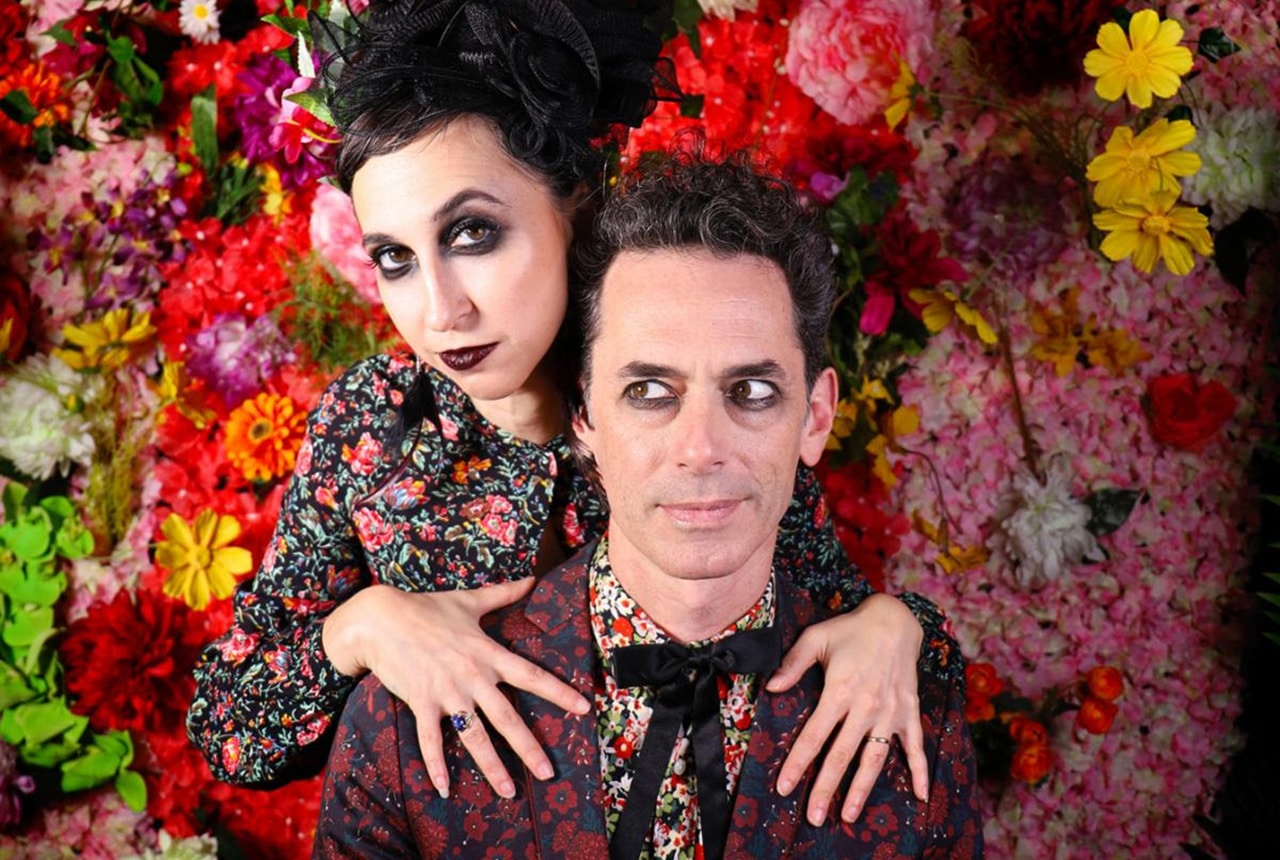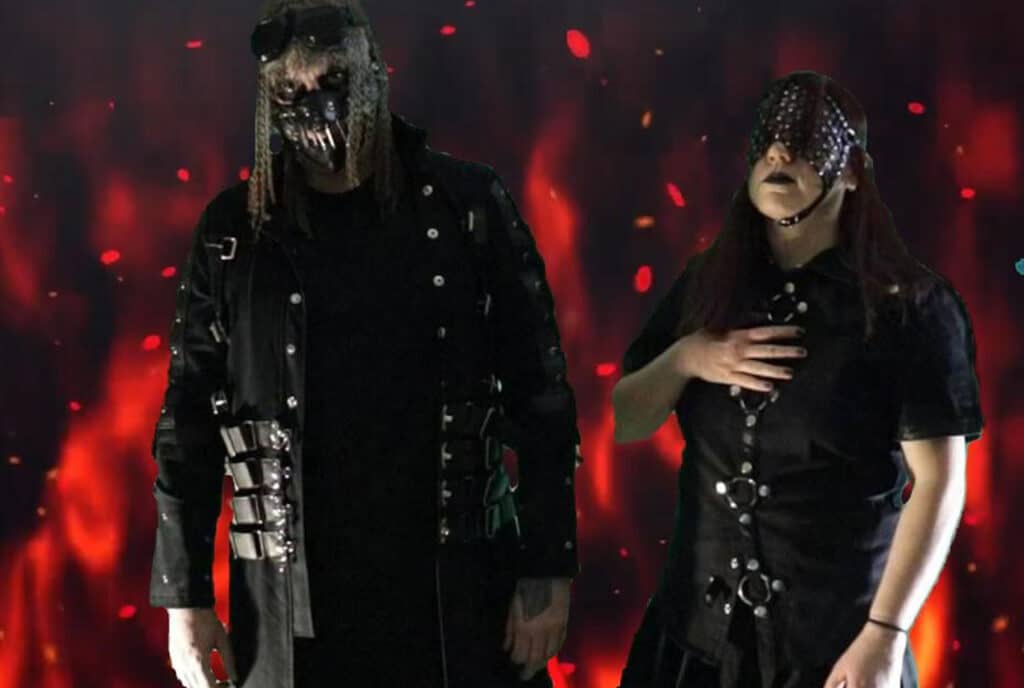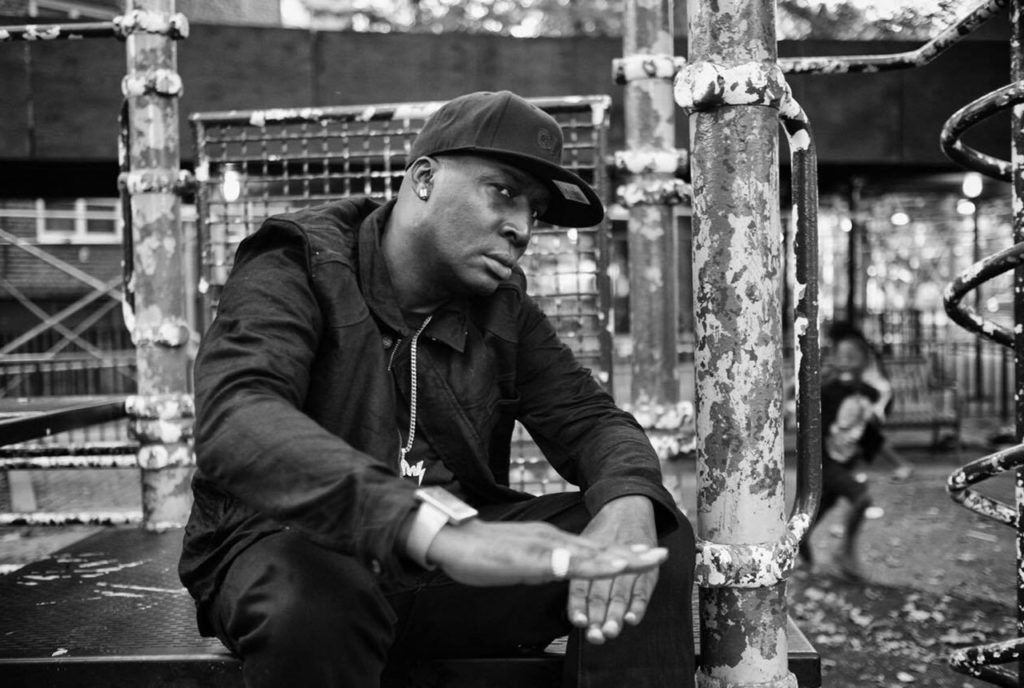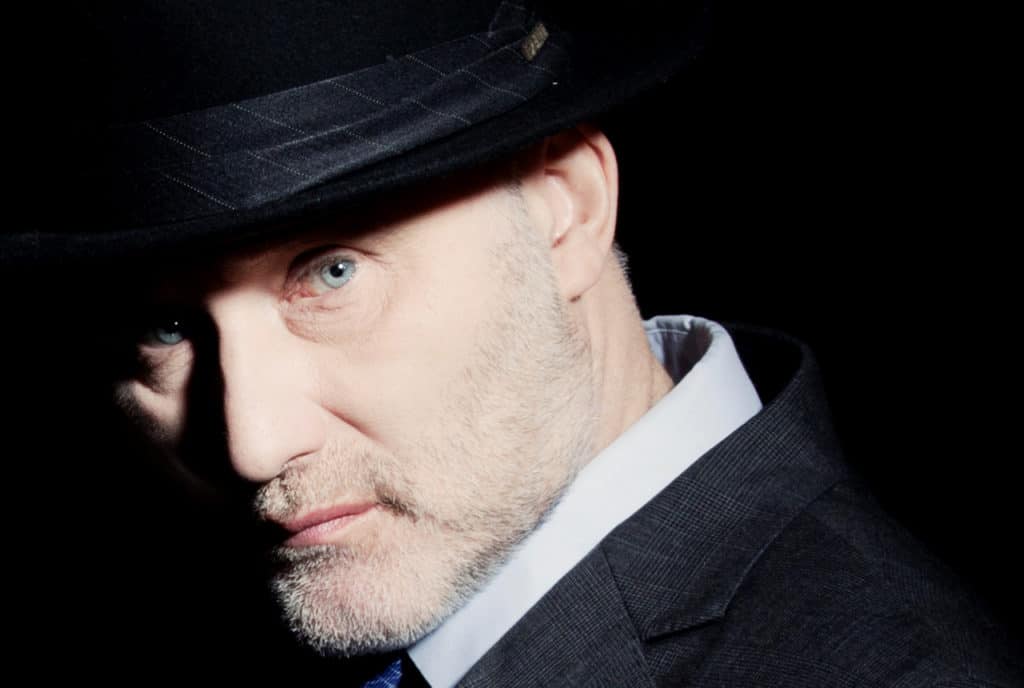On their last album, Our Lady of Radium, gothic-folk duo Charming Disaster focused their songwriting around the subject of scientist Marie Curie and adopted pandemic-induced DIY recording methods. They didn’t have those confines in making their new ‘Super Natural History’ album, but it does build upon that prior release. Super Natural History sees Charming Disaster drawing inspiration from both the natural world and the metaphysical realm. While half the songs used their pre-pandemic process of going into a professional recording studio, the others were started at home. Charming Disaster has also released an oracle deck of cards featuring original illustrations inspired by their songs, commissioned from more than two dozen artists. Over a Zoom interview, members Ellia Bisker and Jeff Morris discussed their latest work.
I know that the making of Our Lady of Radium differed greatly from your other albums. Was the process behind this one closer to your previous work?
Jeff: Coming out of the Our Lady of Radium album, where we focus on one subject and had brought a lot more science in, I feel like we incorporated that into our [creative process]. I mean, we’ve always been interested in science and things of the natural world, and so we incorporated things of that, of natural history, along with our other interest in more esoteric things, like in the occult stuff. So as far as the subject matter, it was a natural progression for us.
Ellia: Or like an accumulation. The things that we’ve explored on past albums have sort of come along with us, including the science stuff of the Curie album. But in terms of our recording process, the answer’s kind of similar, actually. Because for Our Lady of Radium, we had to do everything ourselves in a sort of DIY home-recording situation. And with Super Natural History, for half of the album, we kind of returned to our pre-pandemic process, which was going into a professional recording studio and including a couple of our collaborators from our past projects. We had Rob Garcia on drums and Bob Smith on Bass. Bob is a former band member of mine from Sweet Soubrette, my old band.
Jeff: Rob and I have played for years and years.
Ellia: So we were able to be in a nice studio and not run the session ourselves, and really focus on our performance and executing the arrangements, which was a great luxury. But for the other half of the album, we actually started at home and we tracked our own vocals. We tracked our own guitar and ukulele, and then we brought that to Tonal Park, which is the studio where we’ve worked for many years with Don Godwin, collaborator, engineer, and multi-instrumentalist. We had Don track drums and bass on top of what we had done in our home sessions, and then we added to everything and Don mixed the whole thing. It was kind of a hybrid animal in all respects.
What determined which sessions particular songs would be recorded in?
Jeff: It was more logistics, like what was ready when we had access to the studio. We had planned to work with this one engineer in the studio before the pandemic. When that shut everything down, we shelved that recording session for a while. Then, when things started opening up again, we were like, “oh, we have these songs, so let’s work with you in the studio.”
Ellia: It takes us a long time to do stuff. Like we have a kind of steady output, but everything has a really long pipeline. We started working on those recordings with Hillary Johnson at Figure 8 in Brooklyn. That’s where we started recording in the summer of 2021. At that time, those were the songs that we had ready to record and I remember Hillary asking us like, “Oh, what are you going to do with these songs? Are you going to release them as an EP? Are you going to do singles or is it going to be part of an album?” And we didn’t actually know yet.
Jeff: Yeah. Actually, we had written a lot of the other songs that we had not yet recorded yet, and these are the ones that Hillary was most interested in doing. Hillary gave her feedback too, and helped. Not necessarily arranging them, but [she] gave us some suggestions, which we took to heart.
Ellia: And then, the rest were like, ‘well, we have these as well.’ By that time, we were sort of dealing with them in parallel, and then, ultimately, it was like, ‘well, now we have 10, I guess this is the album.’ But it was sort of two batches that got merged, which is kind of in keeping thematically with the album, actually. With its scientific, magical, and supernatural natural history approach.
In terms of the subject matter of the songs, did you have a set of ideas you were going to write about? Or did you start with a musical aspect and then think about what subject matter would be fitting? It does really seem to have a strong sense of storytelling and concepts behind it. So I’m curious as to how that fits in with the actual music as part of the process.
Jeff: The process… well, some were, were like, ‘we ought to have a song about poisonous plants and’…
Ellia: ‘Well, we ought to have a song about bats.’
Jeff: Yeah. And so we sit down and they’re kind of like a project for us. We’re like, ‘oh yeah, an assignment, let’s do that’… and that seems to fit in well with who we are and what we’re interested in. And then others kind of just occurred, I think.
Ellia: It’s very organic. I mean, some of them come out of other projects. The song “Grimoire” was inspired by a book called Waking the Witch by Pam Grossman. We wrote it as part of an ongoing series based here in New York called the Bushwick Book Club. Songwriters all write a song about the same book and perform those songs live. And so “Grimoire” was part of that, but it was in keeping with our other interests. We accumulate songs. They sort of accrete in an organic way. And then we have a collection, and because our interests are varied but kind of interconnected, everything sort of ends up speaking to each other.
Jeff: Like the song “Disembodied Head” just kind of came out of nowhere.
Ellia: Well, not nowhere.
Jeff: Sure. But it wasn’t like an assignment. It wasn’t like, you know, we need a song about a disembodied head, that kind of thing.

Could you talk about the album cover and the way you used different objects to spell out the title?
Ellia: When I was a kid, I had a shadow box that I would put rocks and shells and neat stuff I collected into. And that has sort of carried forward. Each of us, in our homes, just has neat stuff that we’ve collected. Fans gift us stuff from time to time. And there was a show once where a young person pressed a sort of an iridescent crystal into my palm and said, “I brought this for you.” We have these treasures that we’ve accumulated.
Jeff: Yeah. And on tour, we might go to a…
Ellia: Roadside attraction
Jeff: Or oddity shop and find something that, you know, like, “Oh, this is cool.”
Ellia: So we just, we have all this stuff. We didn’t have to go out and get it. It was more like, “Well, I’ll pack up stuff that I have around the house and you pack up stuff you have around the house, and then we’ll come here to our studio where we have more stuff and let’s see if we can spell out the album title using these objects.” And so some of them are things that we’ve had for a long time ourselves. My wisdom teeth, for example, are included, not the ones that are in my head, but the two that were extracted. Other bones and bits and bobs that people have [given us]. So, our fans get to look at the album cover and maybe see something that they’ve sent us.
Jeff: And it was cool because we’ve been given so much by fans, and it’s just a way to kind of express that generosity. I feel like we’ve received so much, so let’s display it and show.
Ellia: Give it back in a way.
Jeff: Yeah. Give it back. Everything that we’ve been doing is kind of enabled by our fans, you know, so this is like showing that and it fits with the theme of like a curiosity cabinet. We have these odd songs that are kind of connected in these ways.
Ellia: And just as in a curiosity cabinet, like a 19th-century wunderkammer, which is the German word, you might have objects that have scientific value next to objects that have esoteric value. And they’re not separated in that way. And so for us, it’s a similar thing. We didn’t composite that image at all. We actually put a blanket on the floor of our studio, and we had a pile of, like, shells and acorns and stuff. And we’re like, “Oh, like, this one looks like an S. What if we use the starfish?” So there are no repeats in that. That’s actually what it looked like on the floor, and we put a camera over it.
Jeff: It’s kind of like making a song. We have these raw materials and we kind of start off in one way and you’re like, “Oh, let’s see what this looks like.” It kind of like reveals itself.
Ellia: And you’re like, “Oh, this seems to go with this, or this parallels this, or rhymes with that.” So it was kind of a similar process.
Did it come together fairly organically in terms of picking the objects? Did it take a long time to figure out what you wanted to use?
Jeff: Pretty quickly. It’s like, “Oh, what are we gonna use the crystal ball for?” Or like, we have these plastic dinosaurs. It kind of came together pretty quickly.
Could you discuss the card deck that you’ve released?
Ellia: We’ve been using a traditional tarot deck, both in our artistic practice and in our live performances, for a number of years now. We have associated each of the cards in the classic 78 card deck with one of our songs. And with live performances, people pick a card and we’re like, “Oh, it’s the Nine of Pentacles… then we play Grimoire.” So we have been talking for a long time about making our own deck, and we finally reached a point where it seemed like the time was right. We had enough songs accumulated, and we were doing a Kickstarter crowdfunding for the album. One of the obstacles that had prevented us from doing it sooner is that it’s just a big project. We knew we wanted to involve a lot of different artists, so there’s a lot of wrangling people. Jeff did the lion’s share of the wrangling of the artists.What Remains
Jeff: And at this point we had also accumulated relationships with artists and friends who express themselves visually, and it was really a great way to enlist the help or collaborate kind of in this group art project. It was really fun.
Ellia: One of the pleasures of this project is getting to go beyond just making music and getting visual creativity going as well. So each of the cards represents an archetype or a theme from one of our songs. So some of the card names correspond to the song, like there’s the Secretary and the Showgirl, which are songs we have written, and others are more oblique, like the river, which is connected to our song ‘What Remains.’ We asked each of the artists to listen to the song and think about the lyrics and use imagery that spoke to them from the song to create an image that kind of represented that theme or archetype. So the cards are not like an illustration of the song. They’re like two steps away; it’s associative.
Jeff: And it’s very varied. The artwork… each thing seems so different from each other. But it’s cool how it’s all cohesive in the fact that they’re all contained together, kind of like a curiosity cabinet.
How extensively are you planning on touring for this album?
Jeff: We’ve got almost, almost 30 tour dates on the calendar between now and the beginning of June. So we’re going to go out to the West Coast. We’re gonna be in Massachusetts, we’re going to be in the Midwest, we’re going to be in the Southeast. So we’re, we’re going to be all over, and all of our tour dates that we’ve announced so far are up on our website and we’re, we’re really looking forward to seeing people in person.
Purchase Super Natural History at charmingdisaster.bandcamp.com.
For more tour dates and more info, visit charmingdisaster.com.
Read our interview with Charming Disaster about Our Lady of Radium.










